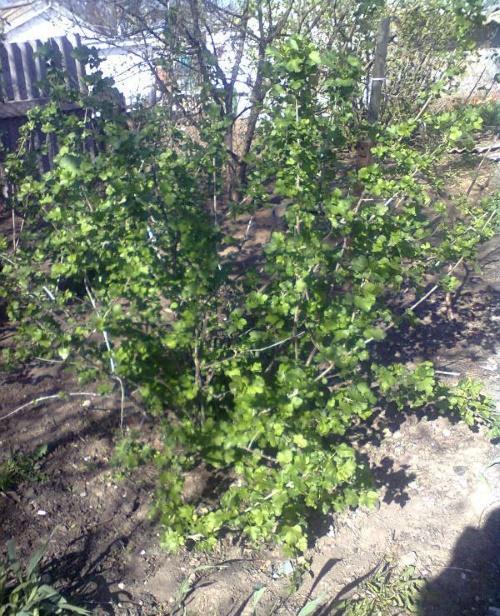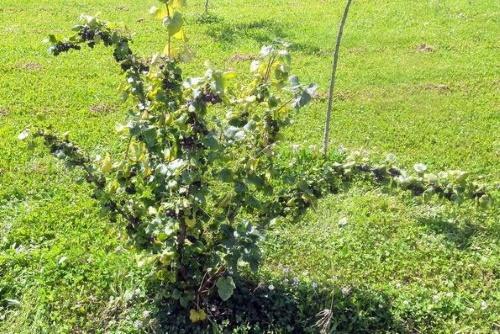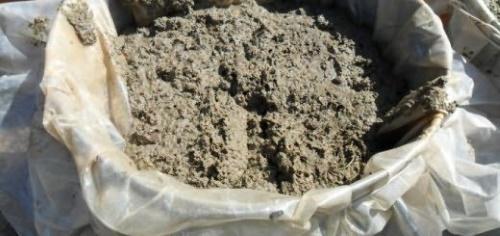Possible reasons for the lack of flowering in yoshta
 Yoshta is a hybrid crop, and her parents are gooseberries and currants. The plant is a powerful shrub with an average height of about 1.5 m with a spreading, up to 2 m, crown. The leaves of the plant resemble both their parents in shape, but they are even larger than currant, darker than them and do not have its aroma. Unlike gooseberries, yoshta has no thorns, which greatly facilitates the task of harvesting. The bush bears fruit with large black berries, shimmering in purple and collected in small clusters of up to 5-7 pieces in each, in the taste of which sourness prevails.
Yoshta is a hybrid crop, and her parents are gooseberries and currants. The plant is a powerful shrub with an average height of about 1.5 m with a spreading, up to 2 m, crown. The leaves of the plant resemble both their parents in shape, but they are even larger than currant, darker than them and do not have its aroma. Unlike gooseberries, yoshta has no thorns, which greatly facilitates the task of harvesting. The bush bears fruit with large black berries, shimmering in purple and collected in small clusters of up to 5-7 pieces in each, in the taste of which sourness prevails.
The culture is also distinguished by increased resistance to diseases that gooseberries and currants are susceptible to, as well as high winter hardiness.
Yoshta it also looks very beautiful as an ornamental shrub, especially if you consider that the leaves stay on the branches until late autumn. But most often it is grown for the sake of berries. However, here gardeners sometimes face such a problem that an outwardly healthy-looking bush develops, but does not bear fruit. There may be several reasons why yoshta does not bloom, and they are all related to the agricultural technology of its cultivation, namely:
- unsuitable landing site;
- lack of nutrients in the soil;
- lack of moisture.
Where is the best place to plant?
Yoshta is one of the most unpretentious shrubs that can survive in almost any conditions. Even shady or low-lying terrain will not be a problem for her, but only if the purpose of planting is purely decorative.
In order for the yoshta to bear color and abundantly, it must be planted in a sunny place in fertile soil. Good nutrition and lighting will provide the plant with the necessary conditions for good fruiting.
To increase yields, experienced gardeners recommend planting yoshta in close proximity to currant and gooseberries.
How to fertilize?
Yoshta is very responsive to feeding, and they should be done even at the planting stage, bringing into the pit:
- humus (about half a bucket);
- a handful of wood ash;
- superphosphate (80-100 g).
In the future, the shrub must be fertilized annually in the spring with organic matter, superphosphate (30 g of the drug per square meter of the circle), and in the fall add potassium sulfate (20 g each).
How to water?
A bush that lacks moisture will not only not bloom, but will also begin to slow down its development. To avoid this, it is necessary to regularly and abundantly water the yoshta, preventing the soil from completely drying out. First, grooves are pulled out around the crown, stepping back from the trunk at least 30 cm. For 1 sq. m. area will need up to 30 liters of water for one watering, otherwise moisture may not reach the roots, which are at a 40-centimeter depth.
To prevent rapid evaporation of moisture, the bushes should be covered with humus or rotted compost.
Water the plant in the same way as other garden crops - early in the morning or in the evening, so that the water has time to absorb.